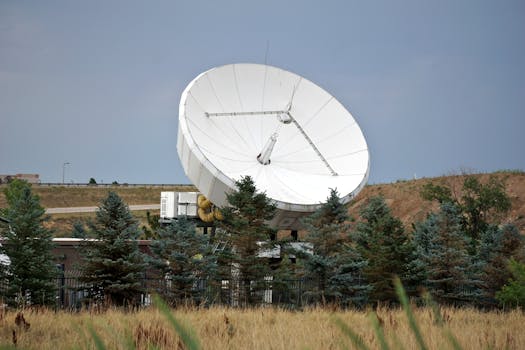
Beyond Earth: How Recent Advances Are Shaping Satellite Telecommunications
Beyond Earth: How Recent Advances Are Shaping Satellite Telecommunications. Recent advances in satellite telecommunications are transforming the way we communicate beyond Earth’s borders, enabling faster, more reliable, and more secure connections. The development of new satellite technologies, such as low-Earth orbit (LEO) constellations and high-throughput satellites (HTS), is driving innovation in the industry. These advancements are not only improving existing services but also enabling new applications and use cases, such as satellite-based broadband, IoT connectivity, and Earth observation.
The use of LEO constellations, for example, is allowing for the deployment of thousands of small satellites that can provide global coverage and high-speed connectivity. Companies like OneWeb, SpaceX, and Amazon’s Kuiper Systems are leading the charge in this area, with plans to launch tens of thousands of satellites in the coming years. These constellations will enable a wide range of applications, including broadband internet access, mobile connectivity, and IoT services.
Advances in Satellite Technology
Recent advances in satellite technology are also driving innovation in the industry. The development of HTS, for example, is enabling satellites to offer higher speeds and greater capacities than ever before. HTS use a combination of spot beams and frequency reuse to increase the amount of data that can be transmitted over a given amount of bandwidth. This is allowing satellite operators to offer faster and more reliable services, which is critical for applications such as video streaming and online gaming.
Another area of advancement is in the field of satellite propulsion systems. New technologies, such as electric propulsion and advanced ion engines, are enabling satellites to operate more efficiently and for longer periods of time. This is reducing the cost of satellite operations and allowing for more complex and sophisticated missions. For example, the European Space Agency’s (ESA) Gaia mission, which is using advanced propulsion systems to create a highly accurate 3D map of the Milky Way galaxy.
New Applications and Use Cases
The recent advances in satellite telecommunications are also enabling new applications and use cases. Satellite-based broadband, for example, is becoming increasingly popular, particularly in remote and underserved areas where traditional terrestrial connectivity is limited or non-existent. Companies like Hughes Network Systems and Viasat are offering satellite-based broadband services, which are providing fast and reliable connectivity to millions of people around the world.
Another area of growth is in the field of IoT connectivity. Satellites are being used to connect IoT devices in remote and hard-to-reach areas, such as in agriculture, transportation, and energy management. Companies like Orbcomm and Inmarsat are offering satellite-based IoT services, which are enabling businesses to monitor and manage their assets more effectively.
Conclusion
In conclusion, recent advances in satellite telecommunications are transforming the way we communicate beyond Earth’s borders. The development of new satellite technologies, such as LEO constellations and HTS, is driving innovation in the industry and enabling new applications and use cases. As the industry continues to evolve, we can expect to see even more exciting developments and innovations in the field of satellite telecommunications.



